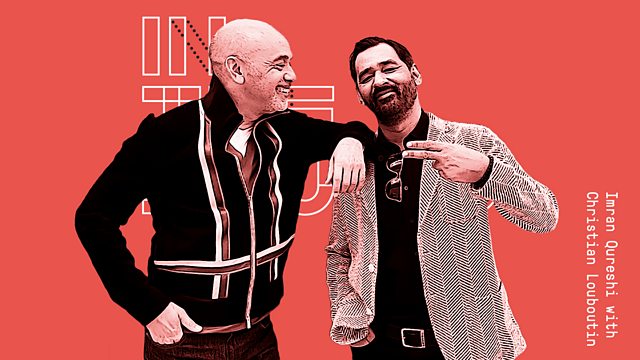Saturday, October 31, 2020
Harper's Bazaar - Pera Museum - Shahzia Sikander, Imran Qureshi, Saira Wasim, Hamra Abbas
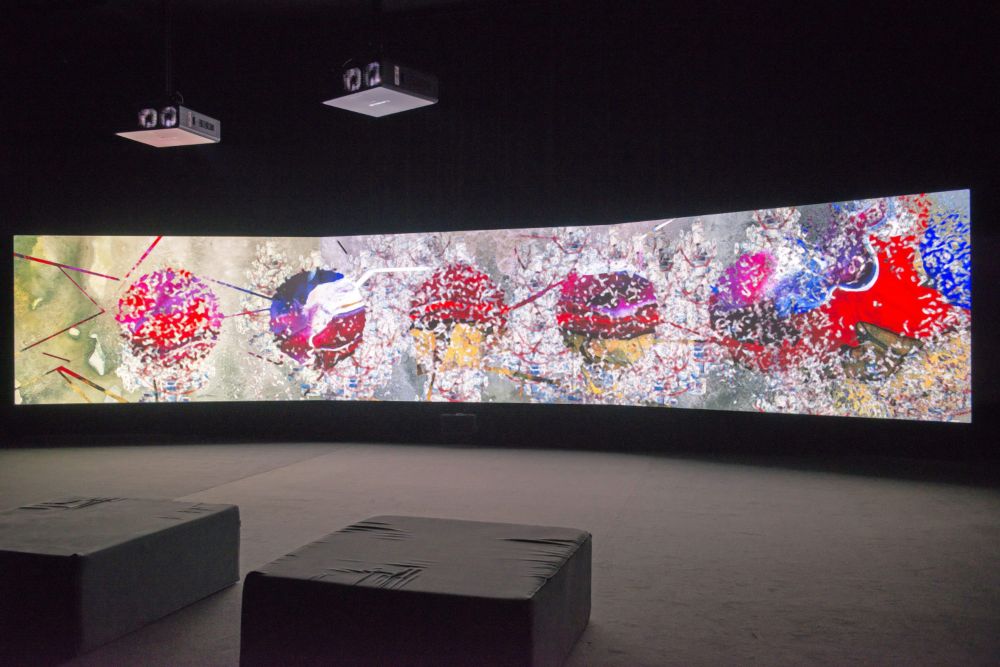
Pera Museum Launches Exhibition Dedicated To Middle Eastern Miniaturists
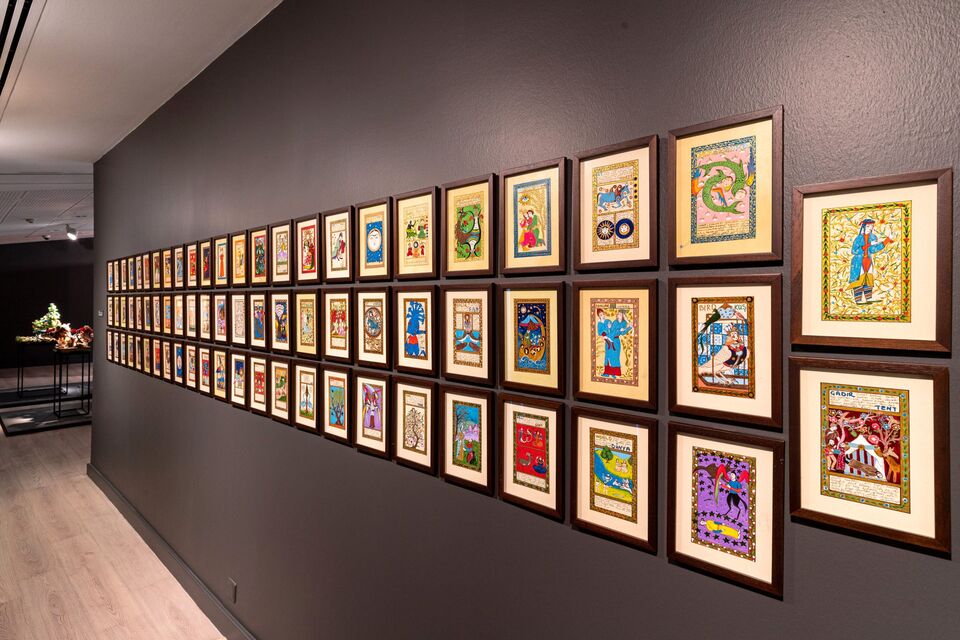
Recognising the traditional miniature’s capacity for carrying multiple narratives and its unique relationship with text and image, Turkish curators Azra Tüzünoğlu and Gülce Özkara are demonstrating the contemporary miniature’s farreaching subversive potential in the Miniature 2.0: Miniature in Contemporary Art exhibition at the Pera Museum in Istanbul.
The show features 14 artists across Turkey, South Asia and the Middle East. Exploring their shared cultural heritage, works by Halil Altındere, Dana Awartani, Fereydoun Ave, CANAN, Hayv Kahraman, Imran Qureshi, Shahzia Sikander, Saira Wasim and others readapt the traditional miniature to delve into colonialism, identity politics, forced migration and representation.
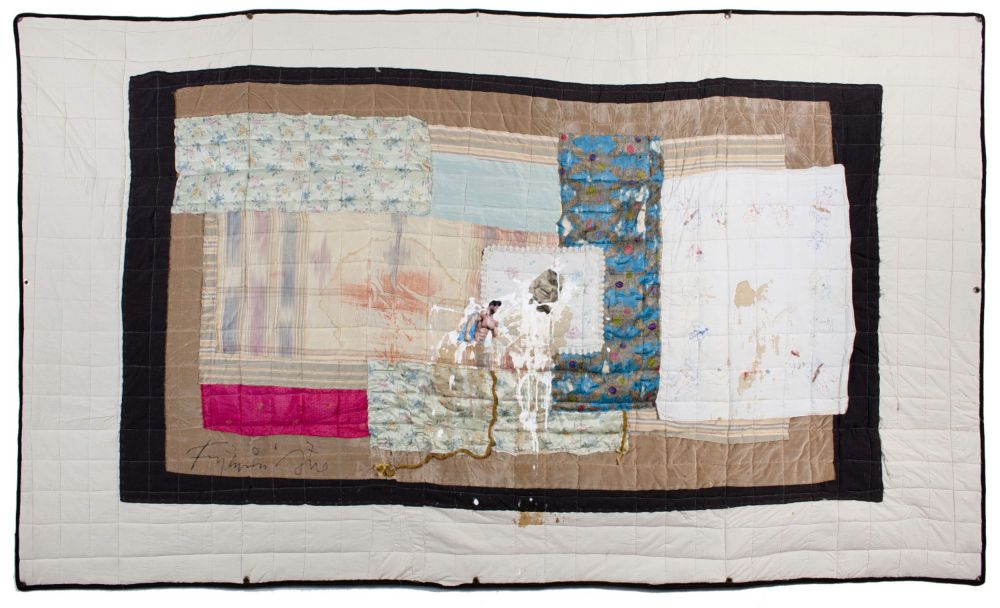 Fereydoun Ave. Untitled. 2018. Mixed media on various cloth duffel. 186x327cm. Courtesy of the artist. Photography by Jalal Hamidi
Fereydoun Ave. Untitled. 2018. Mixed media on various cloth duffel. 186x327cm. Courtesy of the artist. Photography by Jalal Hamidi
Taking reference from renowned Pakistani contemporary miniaturist Shahzia Sikander’s Fleshy Weapons (1997), controversially combining Indian and Pakistani symbology, the exhibition intertwines the work of various Muslim-majority countries, disrupting isolationist politics during the rise of nationalist discourses.
Laden with conceptual meaning since its inception, miniature painting has long held distinctive principles rejecting illusionistic representation. Created collectively, the significance and meaning of a subject-guided miniature painting, instead of its physicality, which utilises an unfolding perspective, is in stark contrast to the European single-point. Today, the miniature, at large, remains frozen in both time and function, serving as an emblem of a past, independent era of glory.
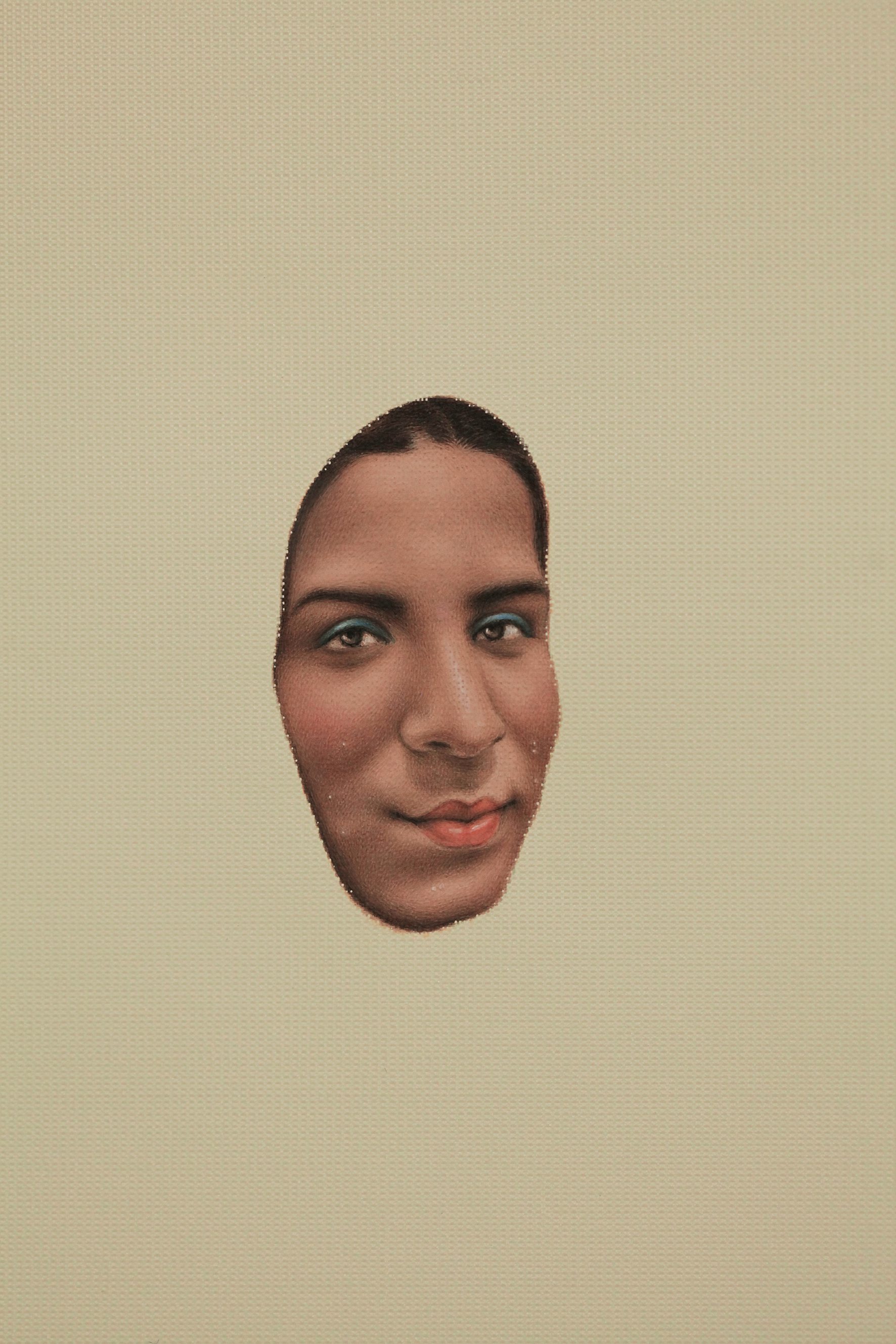 Hamra Abbas. Her Renk I Every Color. 2020. Ink and gouache on silk. 23.5x20cm. Courtesy of the artist and Pilot Gallery
Hamra Abbas. Her Renk I Every Color. 2020. Ink and gouache on silk. 23.5x20cm. Courtesy of the artist and Pilot Gallery
How Lahore is planning to honour its luminaries - Amrita Shergil
Great initiative ... 'Sangat' in Lahore is putting up plaques on relevant building to honor its luminaries of the past.
Pre-petition Lahore luminaries like Lala Lajpat Rai, singer Mohammad Rafi, Amrita Pritam, Sir Dyal Singh Majithia, “a philanthropist” who was the founder of Punjab National Bank and the founder of the Dyal Singh College, are on the list (Sir Ganga Ram—an architect who left an indelible print on Lahore and was a philanthropist—already has a plaque up).
Arwalllaa strongly believes that an individual/city/nation which stays connected and respects its past is well prepared for its future.
Well done Qasim Jafri and the rest of team Sangat.
Source: The Week
How Lahore is planning to honour its luminaries
Through the plaques, the Sangat also wants to create awareness
By Mandira Nayar
October 07, 2020 19:45 IST
A city never forgets. Delhi might have renamed a leafy road to erase its past, but Lahore is trying to preserve memories of a few who left. From the 'Lion of Punjab' Lala Lajpat Rai to legendary singer Mohammad Rafi, famous Lahoris will be honoured by the city they once called home.
Blue enamel plaques will be put up in buildings associated with them. On the list is Amrita Pritam, described as a Punjabi poet and novelist—an acknowledgment of a shared past. Also, Sir Dyal Singh Majithia, “a philanthropist” who was the founder of Punjab National Bank and the founder of the Dyal Singh College. Sir Ganga Ram—an architect who left an indelible print on Lahore and was a philanthropist—already has a plaque up.
Pritam’s house in Hauz Khas was knocked down last year. A red name plate with K 25 is all that is left. In Lahore, however, where Pritam worked for a bit and married her first husband, there will be a blue plaque that marks her home in Anarkali. While she never went back to Lahore, the city she left behind has not forgotten that she once lived there. The idea of Lahore Sangat—motley group of architects, artists, historians and prominent Lahoris—founded about a year ago, is to remember all those walked its streets to create history going beyond boundaries.
“We want to honour prominent Lahoris regardless of caste, creed or nationality,’’ says Qasim Jafri, member of Lahore Sangat, an informal association that is undertaking the project.
Through the plaques, the Sangat also wants to create awareness. Jafri—a hotelier by profession and a lover of poetry—traces his roots across the border. Agra was home for his family before they moved during Partition. The research too, often involves cross border collaboration. “It takes time,” he says.
So far, more than 10 plaques have been put up across the city. There is a plan to put up 140 plaques honouring writers, architects, artists and sportsmen.
Those who stayed, too, will be honoured. Legendary singer Noor Jehan, poet and humanist Faiz Ahmed Faiz, writer Sadaat Hasan Manto and Rustam Gama Pehalwan, known as the Great Gama and considered one of the greatest Indian wrestlers, will have plaques to honour them. Manto left Bombay to make Lahore his home and Rustam was born in India but chose to move to Lahore after Partition. Apart from his wrestling prowess, he is also known for saving many Hindus during the riots.
In a city that has changed enormously in the decades after Partition, it takes a lot of research to narrow down the right place to put the plaque up. Lala Lajpat Rai met with the fatal blow while protesting against the Simon Commission at the Lahore Railway Station. Rai was with protesters leading a non-violent march demanding “Simon Go Back’’ holding black banners. The superintendent of police James A. Scott ordered a lathicharge, choosing to lead from the front. Rai sustained a head injury. Yet he addressed a crowd later—at Nasir Bagh—where he said: "I declare that the blows struck at me today will be the last nails in the coffin of British rule in India.” Three weeks later, he died.
The plaque, according to Lahore Sangat's Facebook page is to be put up at Nasir Bagh where he gives an impassioned plea. To ensure that each plaque—as well as where it has to be placed—has to be carefully. More than just getting the details just right—like in the case of Lala Lajpat Rai who was injured in one place and spoke in another—it also sometimes needs the permission of the current owners. “The government is involved, too. These plaques have to have legal cover. So that they can’t be taken off,” he says.
Lahore is not the only city waking up to its pre-Partition past. Actor Dilip Kumar's house is being acquired by the government and will be renovated and preserved to made into a museum, according to news reports. A week ago, Kumar had tweeted evocatively about his memories of growing up in Peshawar, riding piggy back on his grandfather's shoulders listening to a storyteller in Qissa Khwani Bazaar "narrating stories of valour and victory, deceit and retribution which I would listen to with wide-eyed attention seated next to my father and uncles”. A city never forgets.
Sunday, October 25, 2020
If you like Cheese, thank Indus Valley Civilization - tells latest research
Source: ZME Science
Do you like cheese? You can thank the Indus Valley Civilization for it
Alexandru Micu by Alexandru Micu October 19, 2020 in History, News, Nutrition, Science
The Indus Valley Civilization was the earliest known producer of dairy and dairy products, according to new research.
The lands that make up modern-day Pakistan and India have been producing dairy for almost five thousand years now, according to researchers at the University of Toronto Mississauga. The team explains that dairy has been produced and consumed by the people of the Indus Valley Civilization from as far back as 2500 BCE.
Original cheese
“We found that dairy was an integral part of their diet at a site that dates to about 2500 BCE,” says Chakraborty, who is conducting his post-doctoral research with Heather Miller, an anthropology professor at UTM.
The Indus Valley Civilizations, also known as the Harappans, built one of the greatest empires of the ancient world. Much of the foundations of their success have been lost to time — for example, we don’t have a great idea of how they managed to feed so many people. The study goes some way towards helping us understand the Harappan diet.
Waqas Khan in Toronto Biennial of Art 2021
Source: ArtFixDaily
 |
| Waqas Khan with his work. Source: ViennaContemporqaryMagazine |
Toronto Biennial of Art announces preliminary list of artists, partners, and sponsors for 2021 edition

The Toronto Biennial of Art (the Biennial) today announced an initial selection of Canadian and international artists for the second edition of the city-wide event on view September 25 through December 5, 2021. Commissioned and invited participants contributing to exhibitions, programs, and residencies include Nadia Belerique, Judy Chicago, Sebastian De Line, Jorge González, Lawrence Abu Hamdan, Brian Jungen, Waqas Khan, Vanessa Kwan, Ange Loft, Mata Aho Collective, Eric-Paul Riege, Camille Turner, and Syrus Marcus Ware. The curatorial team, Tairone Bastien, Clare Butcher, Candice Hopkins, Myung-Sun Kim, and Katie Lawson are coming together to work collectively across projects. Additional contributors, partners, and sponsors will be announced in the coming months.
The Biennial commissions will take place in diverse venues throughout the city, moving beyond the Lake Ontario shoreline locations that hosted the 2019 edition. The 2021 Biennial will explore locations near above-ground and hidden water tributaries that feed into the Lake as well as the ravines that shape Toronto. Extending the interconnections of those locations and expanding the notions of what it means “being in relation” that was the central question of the inaugural Biennial, continues to be a guiding principle in a moment of great uncertainty.
Saturday, October 24, 2020
New York Times - Inspired by Miniature Paintings, Shahzia Sikander Goes Big
Source: NYT
NYT features Shahzia Sikander as part of its 'Fine Arts & Exhibits special report' which focusses on the fact that 'even in the darkest of times, art endures and inspires — and that is no less true now, as a pandemic upends human existence'.
Enjoy!
Inspired by Miniature Paintings, Shahzia Sikander Goes Big
It’s been nearly a decade since her last solo show in New York. But this fall the artist is featured in two exhibits, including one of her own.
Shahzia Sikander with video animations from her work “Reckoning” projected onto her. Raised in Pakistan, Sikander has lived in the United States since 1993. “I’ve always seen myself as participating in and broadening that scope of what American art can be — seeing America from within and also seeing it from the outside.”Credit...Farah Al Qasimi for The New York Times
By Hilarie M. Sheets
Oct. 23, 2020, 5:00 a.m. ET
This article is part of our latest Fine Arts & Exhibits special report, which focuses on how art endures and inspires, even in the darkest of times.
Shahzia Sikander, who was raised in Pakistan and moved to the United States in 1993, has long used the language of traditional Indian and Persian miniature painting as a departure point to make contemporary work exploring colonialism, migration, gender and hyphenated identities.
Her art, which moves fluidly across boundaries of geography, culture and time, is enjoying particular attention this fall, viewed against a backdrop of polarization in this country and around the world.
“I’ve always seen myself as participating in and broadening that scope of what American art can be — seeing America from within and also seeing it from the outside,” said Ms. Sikander, who is 51. She noted that in a country where the conversations are often black and white, she has navigated a zone in between.
In “Weeping Willows, Liquid Tongues,” a solo show opening at the Sean Kelly Gallery on Nov. 5, Ms. Sikander brings her nuanced global and feminist perspective to both intimate and large-scale drawings in ink and gouache, glass mosaics, video animations and her first sculpture.
While the political issues in these works can be fraught, said Janine Cirincione, a partner at the gallery, “Shahzia renders them so beautifully and allows poetics to deliver those messages.”
“Arose” (2019-20) is a 6-by-4-foot drawing composed of two repeating female forms — highly stylized figures depicted in profile and with long skirts, typical of how women were rendered in the classical miniature painting tradition that Ms. Sikander first engaged with as an art student.
Ms. Sikander’s drawing “Arose” is composed of two repeating, highly stylized female forms. Credit...Shahzia Sikander and Sean Kelly
Liberated from that frame here, the characters — either lovers or mirror versions of one another — spiral in a pinwheel, channeling “the enormous possibility of the feminine spirit,” Ms. Sikander said. Their lushly painted skirts read kaleidoscopically as a giant poppy blossom, a recurring motif in the show alluding to the opium industry in Afghanistan and the long-term U.S. intervention and conflict there.
The ravishing circular composition “also looks like a bombed-out out site to me,” said the artist, who likes to play with multiple meanings simultaneously and create tension between beauty and destruction. She has made a larger version of the image in mosaic, a medium she first tackled with a 66-foot-high permanent commission completed in 2017 at Princeton University.
Ms. Sikander realized classical miniature painting was ripe for deconstruction as a student at the National College of Arts in her native Lahore in 1988. A visiting lecturer from the Victoria and Albert Museum in London showed slides of hundreds of the seductive gemlike works, painted over the centuries under Persian and Mughal rulers and now largely residing in the storage rooms of Western museums as a result of colonial histories of looting.
“When I read more about how that work was acquired, my mind started to invent stories,” said Ms. Sikander, who spent four years in school mastering the technique and precision required to build the luminous surfaces of miniature painting layer by layer. “This art form is almost buzzing at the edges.”
Inserting personal imagery within the guise of miniature painting, Ms. Sikander’s thesis project mapped out the architectural complex of her family home in a long horizontal piece called “The Scroll” (1989-90).
Sunday, October 18, 2020
Archive April 2000 - 'Acts of Balance' - Shahzia Sikander Exhibition in Whitney Museum
Source: NYT
Picking out of archive, older exhibition of Shahzia Sikander - Acts of Balance - with her mural - 'Chaman'
ART/ARCHITECTURE; A Painter of Miniatures on a Maximum Scale
By Barry Schwabsky
May 14, 2000
IT was afternoon on April 20, and that evening would be the opening of Shahzia Sikander's exhibition ''Acts of Balance'' at the Whitney Museum's gallery in the Philip Morris Building on East 42nd Street. By this time, most artists would have been focusing on what they were going to wear, but Ms. Sikander was still there in paint-spattered jeans and a Mona Lisa T-shirt, continuing to work on the art.
''I'm always changing things,'' said Ms. Sikander, stepping into a hydraulic lift that would carry her aloft to work on a triptych showing female acrobats, which had been hung on a wall overlooking the lobby where office workers were eating lunch. ''When paintings come back after a show, I work on them. I'm always putting things in and editing things out, putting things in and editing things out. Nothing is done until it's wrecked.''
That's not what you would expect from an artist whose first training was in the stylized, highly controlled art of Islamic miniatures, in which high finish, not spontaneity, is valued. But then you wouldn't expect such an artist to expand her work to mural scale either, or to mix in imagery from Hindu India and Western pop culture.
Ms. Sikander, who is 31, seems to have been a contrarian at least from the day she set foot in the National College of Arts in her hometown, Lahore, Pakistan. While Western viewers may find the allure of the exotic in her use of the imagery and techniques of the miniature, at home her desire to be trained in the tradition puzzled her teachers and fellow students, who saw it as something that would only impede her creativity. But her work is hardly about adhering to a closed heritage. Instead, it seems to invite previously unrelated pictorial strains to intermingle with humor, irony and often eroticism.
''Even when miniatures were at their height, their aesthetics were incredibly diverse,'' she says. ''Hybridity isn't a new thing.''
After finishing her course in Lahore, Ms. Sikander went on to graduate school at the Rhode Island School of Design in Providence and then to a fellowship at the Glassell School of Art in Houston. She first burst onto the New York scene in 1997, with her work appearing in rapid succession in a group show at the Drawing Center, in the Whitney Biennial and in a one-person gallery show at Deitch Projects in SoHo. It says something about the shifting nature of provincialism that while few people were surprised by the sudden rise of a young artist from Pakistan, the fact that she lived in Houston really did seem mysterious. Because her still-undecided immigration status is being handled in Houston, she maintains a studio there as well as one in New York.
Visitors entering the enclosed gallery space where the main part of ''Acts of Balance'' is installed (through July 7) can be forgiven for wondering whether Ms. Sikander's process of adding and subtracting visual elements is still going on. Three walls have been painted with landscape and architectural elements and other images derived from the triptych hanging outside, turning the tall, boxy gallery into a sumptuous imaginary garden. The murals were then partly covered with translucent sheets of yellow tissue paper that have been pinned to the surface here and there. Some of the sheets have also been painted with figures and decorative patterns done in a loose, spontaneous hand. But most of them are just blank, screening the underlying image rather than replacing it.
Asked why she was trimming slivers off the blank yellow sheets -- in a work of this scale, the difference would hardly be noticeable -- Ms. Sikander laughed and said, ''Well, I like to cut hair.'' Everything seems movable, provisional, unfinished. The way ''Acts of Balance'' plays hide and seek with its imagery cannot help recalling Jackson Pollock's remark that he hadn't eliminated imagery from his paintings but simply ''veiled'' it.
Pollock's word rings bells today, when a number of young female artists from the Islamic world have come to prominence on the American art scene. In addition to Ms. Sikander, there are the Egyptian-born, French-educated Ghada Amer and the Iranian-born Shirin Neshat, both of whose work is currently featured in the Whitney Biennial as well as in the ''Greater New York'' survey at P. S. 1 in Queens.
In Ms. Sikander's work, as in that of Ms. Neshat, the veil has sometimes been a powerful symbol, but it has also been an inherently ambiguous one. Sometimes viewers have wanted to find more polemics in the image than the artist intended. When a veiled woman appears in a miniature, Ms. Sikander points out, it isn't a commentary on the veil, and the same can be true of her work when it takes images from the history of miniatures. ''But the reaction to this imagery can get simplified here, and that's something I'm trying to deal with,'' she says. As result, she is trying to focus her work on ''becoming less figurative -- looking formally at miniatures rather than at their narratives.''
''A lot of the vocabulary in 'Acts of Balance' comes from the stylization, the palette, the forms in miniatures,'' she continues. ''So the veiled woman isn't there.'' And yet in a more abstract way, the veiled woman remains the central image in ''Acts of Balance.'' Right in the middle of the central wall, facing each viewer walking into the gallery -- though not the first thing one notices in this strange melange of multiplicity and emptiness -- are the eyes of a woman who gazes out serenely, but also questioningly and challengingly, from behind a metaphoric veil of yellow tissue paper.
The viewer who notices the centrality of this image may come to feel that the art is seeing, studying, questioning him or her rather than vice versa. ''Acts of Balance'' is full of autobiographical references, right down to the images of cowboy boots, a wry reference to Ms. Sikander's current half-willing residence in Texas. But the most self-referential image of all may be this: a clear-eyed young woman at the confluence of many cultures, all in transition.
Shahzia Sikander's Parallax in Miniature 2.0 - Pera Museum
Source: Sean Kelly
Shahzia Sikander in Miniature 2.0
Group Exhibition, Pera Art Museum, Istanbul, Turkey
August 11, 2020 – January 17, 2021
Shahzia Sikander in Miniature 2.0
Shahzia Sikander’s film Parallax is featured in the group exhibition, Miniature 2.0 at the Pera Art Museum, Istanbul, Turkey. On view now through January 17, 2021.
Focusing on contemporary approaches to miniature painting, this exhibition brings together the works of 14 artists from different countries including Turkey, Iran, Pakistan, Saudi Arabia and Azerbaijan. Contemporary miniature painting goes beyond its historical context in terms of form and content, focusing on issues such as colonialism, orientalism, economic inequality, gender, politics of identity, discrimination, social violence, compulsory migration, and representation. Miniature 2.0 emphasizes the participating artist’s diverse approaches to traditional miniature, as well as revealing the commonalities they share.
Parallax, 2013, is a monumental, multichannel installation composed of hundreds of handmade drawings and paintings used to create a digitally animated film. As her starting point, Sikander focused on the geostrategic position of the Strait of Hormuz. Concepts including ideas of conflict and control emerge as core themes of a perspective stretching from modern history to the Post-Colonial period. The animation simultaneously combines abstract, figurative, and textual elements, emphasizing the narrative complexity of the work. The original soundtrack, composed by Du Yun, includes six poems recited in Arabic and written specifically for the video, which address subjects ranging from the regional historic context to reflections on human nature.
Shahzia Sikander, Parallax, 2013, 3-channel HD digital animation, 5.1 Surround Sound, music by Du Yun.
Saturday, October 17, 2020
Hamra Abbas and Shahzia Sikander at the inaugural Asia Art Triennial, NY
Two Pakistani artists' works, Hamra Abbas and Shahzia Sikander's works are represented in the inaugural Asia Society Triennial in the city of NewYork.
Hamra is exhibiting her miniature portrait series while there are two works of Shahzia - one of them being her NCA Thesis work - rare opportunity to see it in the flesh. Don't miss it!
 |
Shahzia Sikander, The Scroll, 1989-1990. Vegetable color, dry pigment, watercolor, and tea on wasli paper. H. 13 1/8 x W. 63 7/8 in. (33 x 162.2 cm). © Shahzia Sikander, Courtesy of the artist and Sean Kelly, New York
------------------------
Source: Asia Society
Part 1: October 27, 2020–February 7, 2021
Part 2: March 16, 2021–June 27, 2021
 |
Artist Talk by 'Hermit' Shahzia Sikander
This is one of the most comprehensive accounts of Shahzia's journey as an artist, by herself.
A must watch!
Enjoy!
*PS - to watch the video, switch to 'web view' if you on a mobile-phone
Artist Talk by Shahzia Sikander
Source: Space 118
Sikander’s three decade long oeuvre has brought historical Indo-Persian book arts into the forefront of contemporary art dialogue. Informed by South Asian, American, Feminist and Muslim perspectives, Sikander has developed a unique, critically charged approach to this time-honoured medium – employing its continuous capacity for reinvention to interrogate ideas of language, trade and empire, and migration. Her works encompass painting, drawing, animation, installation, video and sculpture. A recipient of a MacArthur Fellowship (2006) and the US Medal of Arts (2012), Sikander’s work has been surveyed in solo exhibitions at MAXXI Museo Rome (2016-2017), the Asia Society Hong Kong (2016), the Guggenheim Museum Bilbao (2015), the Irish Museum of Modern Art (2007) and the Whitney Museum of American Art (2000) among others. Sikander will have a solo show at the Sean Kelly Gallery in NYC late October through Mid-December 2020. Sikander serves on the boards of the Rhode Island School of Design and Art21. She lives and works in New York City.
In her talk, Shahzia will take us through her recent museum exhibitions, gearing towards her latest solo “Weeping Willows, Liquid Tongues” at Sean Kelly, New York. She is joined in conversation by Phalguni Guliani and Saloni Doshi.
Sunday, October 11, 2020
Auctions - Amrita Shergil - Indian Art is flourishing
Buoyant: Amrita Sher-Gil’s ‘Little Girl’, which sold for ₹18.6 crore | Photo Credit: Special arrangement
The Indian modern and contemporary art market is flourishing even during the pandemic
Source: The Hindu
By: Ritika Kochhar
While the economy has tanked during the pandemic, Indian art has not only flourished, it has set record prices
On September 3, 2020, a new record was set in the Indian art world. A 1974 untitled V.S. Gaitonde oil was auctioned by Pundole’s in Mumbai for ₹32 crore. The unnamed international buyer bought the 60x40 inch work remotely, over the phone, in what is fast becoming the norm in these times of pandemic.
The art belonged to the Glenbarra Art Museum in Japan, owned by businessman and collector Masanori Fukuoka who has one of the largest collections of modern Indian art. It broke the record variously held by another Gaitonde that fetched ₹29.3 crore at a Christie’s auction in Mumbai in 2015; Raza’s Tapovan, which fetched ₹29.03 crore at another Christie’s auction held in New York in 2018; and by Amrita Sher-Gil’s The Little Girl in Blue that fetched ₹18.6 crore at a New York auction in 2015.
The Pundole’s sale is only one of several successful online auctions of 2020. In an economy that has largely suffered during the pandemic, the Indian modern and contemporary art market has not only flourished, it has set record prices compared to previous years.
200 online auctions
According to Ishrat Kanga, Deputy Director and Specialist, Head of Sale at Sotheby’s London, the first half of 2020 has seen $575 million in private art sales worldwide, up by 10% from last year.
Sotheby’s latest auction of Indian artwork, Modern and Contemporary South Asian
Art, was in London on September 29, and featured 16 unpublished works, including pieces by Gaitonde and Ram Kumar as well as Bhupen Khakhar’s 1971 Portrait of Shri Shankerbhai V. Patel Near Red Fort. The last was estimated at ₹4.3 crore and sold for ₹19.17 crore. Khakhar, of course, had a huge exhibition at Tate Modern in 2016, lending more visibility to not just the artist but to Indian art in general in the U.K.
An important aspect at this juncture, as much as the quantum of sales, is the audience adapting to the changing ways in which art is now viewed. “We have held almost 200 online auctions so far in 2020, four times the number last year. And 88% of all bidders at Sotheby’s in the first half of 2020 were online, over a third of the online buyers were new patrons, and over 25% of our buyers worldwide were under 40,” says Kanga.
Art as comfort
Last month, artist Waswo X. Waswo had an online party and artist walkthrough, followed by a Q&A, for the opening of his new show at Gallery Latitude 28 in New Delhi. The audience, he says, was global. “A lot of sales happen during the opening, when people meet each other and in the general euphoria, ask gallery owners to save artworks for them. That’s not happening now. So, we held an online opening, and more than a hundred people joined in, from Pakistan, Switzerland, Delhi and Goa.”
S.H. Raza’s ‘Tapovan’, which fetched ₹29.03 crore | Photo Credit: Special arrangement
In August, Kolkata’s Victoria Memorial Hall and New Delhi’s DAG Museums jointly organised ‘An Inheritance of Imaginations’, one of the largest online exhibitions where, probably for the first time, a vast selection of paintings by Rabindranath Tagore and Gaganendranath, Abanindranath and Sunayani Devi Tagore was displayed and discussed.
The positive response to online viewings and auctions has taken artists and gallerists alike by surprise. Says Roshni Vadehra, director of Vadehra Art Gallery in New Dehi, “We thought it would be extremely challenging to convince people to buy art during such uncertain times, but the response has been quite amazing. One reason could be that people are at home. They’re not spending on vacations, so they spend on art or they look at art as a source of comfort.”
No government support
Galleries are also going out of their way to connect with collectors. ‘In Touch’ is an online collaboration between 10 galleries in India and Dubai, where they pool exhibitions, knowledge, audiences and share prices. Another collective of 15 galleries has come together on a platform called TAP India, started by Sharan Apparao of Chennai’s Apparao Galleries, to hold exhibitions, talks and online events once a month. Vadehra Art Gallery and Nature Morte in Delhi have refurbished their online shops and Sotheby’s has added a ‘Buy Now’ section on its website.
The buoyancy in sales, however, doesn’t benefit all artists equally. As Apparao points out, “For every hundred artists, only three succeed. Some have been forced to sell their works cheap because they are not like galleries or collectors who have a cushion.” Waswo, who works with miniature artists in Udaipur, concurs. “I have told the artists who work with me that I can pay them for 12-18 months but other miniature artists, who supply to tourist shops, are selling tea to feed their families.”
There is also the matter of non-existent government support. Unlike many other countries, in India, there are no tax breaks or subsidies for artists and craftsmen. Art attracts some of the highest taxes at 12% GST and an import duty of nearly 15%. Apparao says there are many ways in which both the government and collectors can help build up the art market. “It’s not only about sales,” she says. “You’re also talking of collectors building up a base of educational information and about government infrastructure. About more courses, common platforms for performing arts, and government help to struggling artists.”
The ways in which the art fraternity has banded together to create new ways to sell art during the pandemic, as well as the unexpected jump in art sales, are great gains. Ideally, this learning should be used as a springboard by the fraternity to adapt and innovate in other ways as well.
Saturday, October 10, 2020
Imprints of Time - Imran Qureshi
A wonderful narration of his childhood memories via two objects from his parents house - a typewriter and a clock, and relating it to his art!
Source: Galerie Thaddaeus Ropac
From his home in Lahore, Imran Qureshi reminisces about the sounds of his father’s typewriter and the chimes of the wall clock installed in his study, which fascinated him as a boy. In retrospect, he recognises and celebrates the connection between these lasting impressions from his childhood, and his own artistic practice.
Saturday, October 3, 2020
Shahzia Sikander in conversation with Sadia Abbas and Ayad Akhtar
Artist Shahzia Sikander in conversation with writers Sadia Abbas and Ayad Akhtar - Sep 30 - for the Sean Kelly exhibition in New York - Nov 5 - Dec 19
Enjoy!
Ali Sethi - At Home with Harvard: Sounds of Music
Good to see Ali Sethi's Dec 2019 performance being part of Harbard's roundup on Music activties in the past year.
Source: Harvard Magazine
Ali Sethi brings the Sanders Theatre crowd to its feet during a concert last spring. His Harvard mentor, Ali Asani (right, in suit and tie), joined him on stage.
Photograph by Jake Belcher/Courtesy of the Office for the Arts at Harvard
TRUE STORY: I blew out the speakers on my laptop while reporting “A Melodic Being.” Ali Sethi’s music is infectious and enrapturing—especially when you turn up the volume—and I listened to it over and over while writing about him. My computer’s speakers finally quit one day when I was replaying (for the nth time) a video in which he and his band spiral joyously through a live version of “Dama Dam Mast Qalandar,” while the audience jumps to their feet, hands in the air. Sethi’s music often combines the ancient folksongs he grew up singing in Lahore, Pakistan, with contemporary pop sounds. But his art goes deeper than that: classically trained in traditional Pakistani music, Sethi transforms Sufi ghazals and qawwalis—love and devotional poems that emphasize tolerance, pluralism, and an inward search for the divine—into his own “avenue of dissent” in a modern Pakistani culture that doesn’t make room for open opposition. “The poems are so extremely inclusive,” he says. “And the appetite for Sufi music in Pakistan allows people like me to get away with a lot of potentially subversive stuff through the metaphors of Sufi poetry—these beautiful, deliberate ambiguities.” After reading about him, check out some of Sethi’s vast catalog of music on YouTube.
~Lydialyle Gibson, Associate Editor
--------------------------------------------------------------
At Home with Harvard: Sounds of Music
This round-up is part of Harvard Magazine’s series “At Home with Harvard,” a guide to what to read, watch, listen to, and do while social distancing. Read the previous selections, featuring articles about climate change, racial justice, movies and theater, and more, here.
MUSICIANS, music composers, music scholars: Harvard and Boston are home to some of the world’s most interesting and diverse practitioners of the art, and Harvard Magazine covers a slice of the music scene in frequently. Below, find a selection of just a few of our favorites.
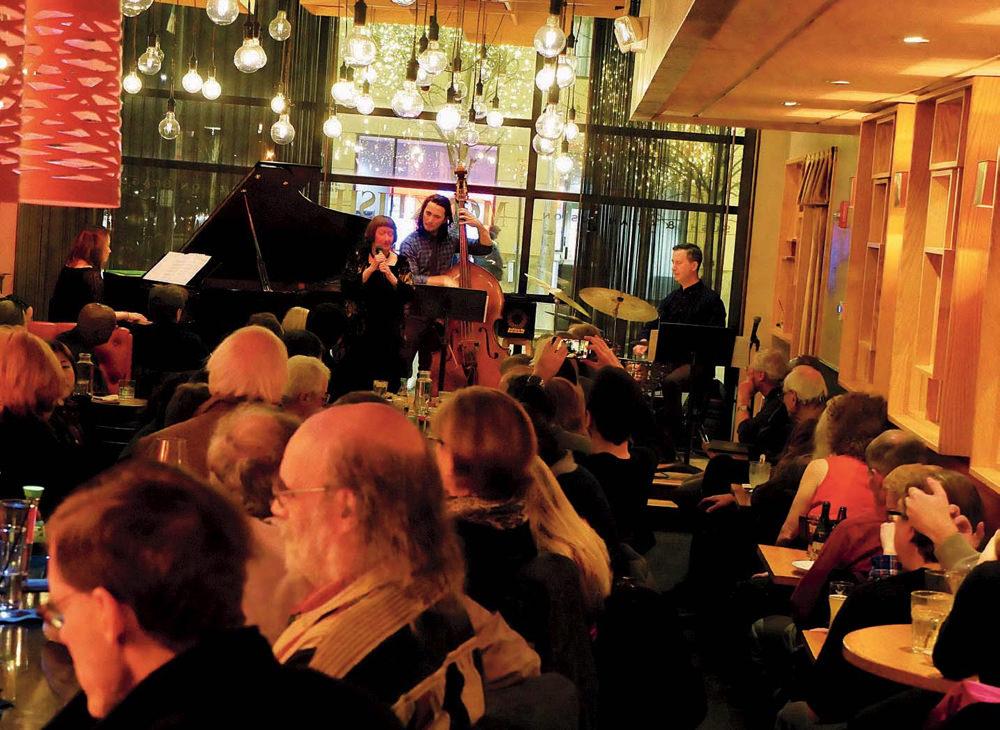 Sheila Jordan performs with the Yoko Miwa Trio at The Mad Monkfish, in Cambridge.
Sheila Jordan performs with the Yoko Miwa Trio at The Mad Monkfish, in Cambridge.Photograph by Janice Tsai
BEFORE I WROTE “Jazz and Boston: A True Combo,” I never thought of Boston as a true jazz city. New Orleans and New York City, sure, but not Boston. But as I did more research, I learned about Boston’s rich history as both an incubator and purveyor of top jazz talent. (Where do you think many of New York’s top players learned the ropes?) In the end, I gathered a few of the best places to find jazz in Boston. I hope that one day, you’ll be able to check some of them out.
“One Small Step for Music,” a feature about Peabody professor of music Alex Rehding, came out of a much, much shorter piece. But after finishing up that initial assignment, I felt I had barely scratched the surface of what Rehding had to offer—specifically, the interstellar angle. Decades after NASA launched The Golden Record into space, Rehding is still fascinated by the philosophical, theoretical, and musicological implications of the project. After talking to him, I was, too. Working on the feature changed how I think about music, and I hope it might interest you as well.
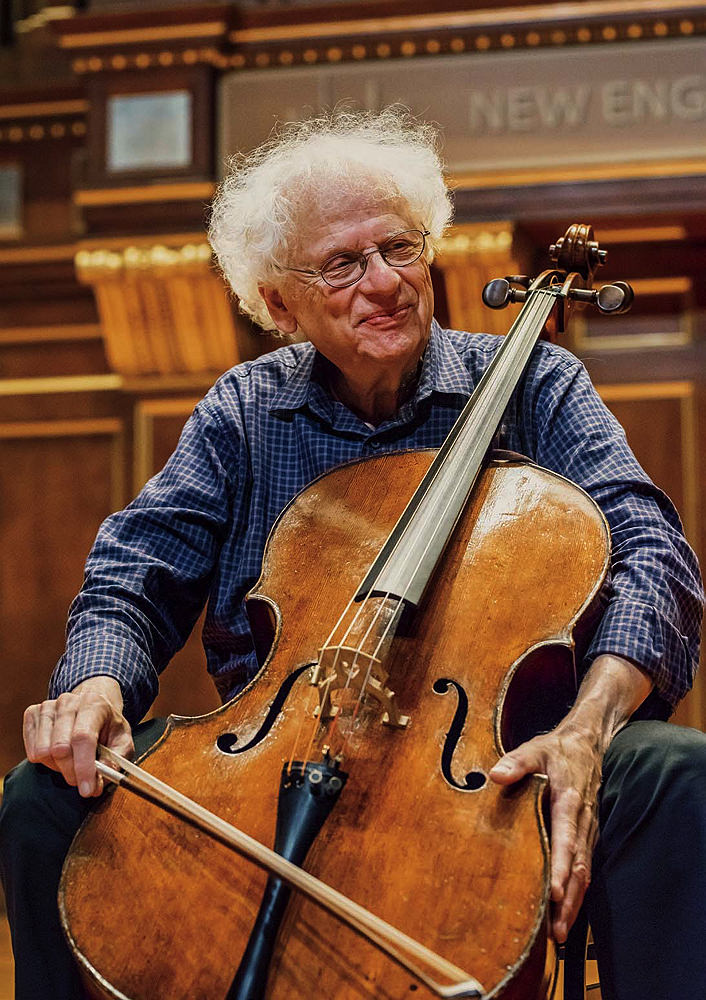
Cellist and teacher Laurence Lesser is celebrating his forty-fifth year at the New England Conservatory of Music.
Photograph by Andrew Hurlbut
“Once Again, With Feeling” is a great profile of legendary cellist and pedagogue Laurence Lesser ’61, who, after decades of playing and teaching the instrument, sees more room for growth. “I’m still learning how to play,” he says. “It’s like practicing medicine or languages: you never stop learning, you never stop growing.” It’s a terrific illustration of the mindset of a great artist, one whose influence will endure for decades to come.
~Jacob Sweet, Staff Writer/Editor

Ali Sethi brings the Sanders Theatre crowd to its feet during a concert last spring. His Harvard mentor, Ali Asani (right, in suit and tie), joined him on stage.
Photograph by Jake Belcher/Courtesy of the Office for the Arts at Harvard
TRUE STORY: I blew out the speakers on my laptop while reporting “A Melodic Being.” Ali Sethi’s music is infectious and enrapturing—especially when you turn up the volume—and I listened to it over and over while writing about him. My computer’s speakers finally quit one day when I was replaying (for the nth time) a video in which he and his band spiral joyously through a live version of “Dama Dam Mast Qalandar,” while the audience jumps to their feet, hands in the air. Sethi’s music often combines the ancient folksongs he grew up singing in Lahore, Pakistan, with contemporary pop sounds. But his art goes deeper than that: classically trained in traditional Pakistani music, Sethi transforms Sufi ghazals and qawwalis—love and devotional poems that emphasize tolerance, pluralism, and an inward search for the divine—into his own “avenue of dissent” in a modern Pakistani culture that doesn’t make room for open opposition. “The poems are so extremely inclusive,” he says. “And the appetite for Sufi music in Pakistan allows people like me to get away with a lot of potentially subversive stuff through the metaphors of Sufi poetry—these beautiful, deliberate ambiguities.” After reading about him, check out some of Sethi’s vast catalog of music on YouTube.
~Lydialyle Gibson, Associate Editor
Imran Qureshi's BBC podcast shortlisted for AIB Award
The podcast was done last year and shared here in July 2019 (click here to see the article).
Listen to the podcast, it is a work of art in itself!
Source: AAN Foundation
----------------------------------------
Saturday, July 13, 2019
Imran Qureshi with Christian Louboutin on BBC Radio
Friday, October 2, 2020
Weeping Willows, Liquid Tongues - Shahzia Sikander's New Exhibition - Nov 5 - Dec 19
Source: Sean Kelly
Shahzia Sikander's first exhibition in a gallery in many years, opening on November 5th in New York.
Only six works are being exhibited (so far - still has a month to go before the opening) but all are large scale ( approx 5 x 8 feet). These include works on paper (ink and gouache) and a video animation with sound (music done by the award winning Du Yun). But Artwallaa is intrigued the most by 'Arose' because of the medium used - glass mosaic with patinated brass frame, as well as its size.
In the past 5 years, Shahzia has increasingly used mosaic as a medium of expression. True to her passion for excellence, she spent time in Germany and Italy to learn and master the technique. One of her first public commissions using this technique is the work displayed at Princeton University (more on this probably in another article).
Covid has restricted all our travels, but if you are lucky to be in NY, do attend. Otherwise enjoy it virtually - here at PAN and elsewhere!
Your 'mosaic appreciating'
Artwallaa
 |
Arose, 2020 glass mosaic with patinated brass frame 84 x 62 inches (213.4 x 157.5 cm) edition of 5 with 2 APs |
 |
Kinship, 2019-2020 ink and gouache on paper paper: 60 x 96 inches (152.4 x 243.8 cm) |
 |
| Arose, 2019-2020 ink and gouache on paper paper: 76 x 51 inches (193 x 129.5 cm) |
 |
| Mirrored, 2019 ink and gouache on paper paper: 85 x 51 inches (215.9 x 129.5 cm) |
 |
Oil and Poppies, 2019-2020 ink and gouache on paper paper: 98 x 51 inches (248.9 x 129.5 cm) |
 |
| Reckoning, 2020 - HD video animation with sound; Music by Du Yun; Animation by Patrick O'Rourke - duration: 4 min 16 sec |
|

















